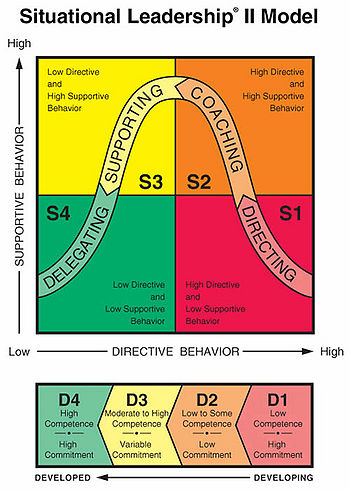Situational Leadership II
Big Idea
The Situational Leadership theory introduced by Paul Hersey and Kenneth H. Blanchard (1974,1982).The idea behind this is that the most effective leadership style is situational-specific. They argued that when the situation is changing (people involved in the project), the leadership style that it is applicable will have differences from the the one used efficiently before (Ronald K. Hambleton and Ray Gumpert, 1982). The management concept of Situational Leadership is introduced in order to help people be more effective in their everyday interactions. Another ingredient in their theory is that the leadership style needs also to differ with regard to the given task that needs to be done and the maturity level of the group or the individual.
By organization point of view, implementing Situational Leadership is about training managers to identify the advantages and disadvantages of each style, and how and it can be implementing in different work situations. As Carmen Cirstea and Dumitru Constantinescu mentioned; it is vital for managers to be able to identify their intrinsic leadership style, as intrinsically they will return in that style on periods of stress.
As leadership is an act from people to the people, it is important to know your people and Paul Hersey and Kenneth H. Blanchard made a model in order to help people but also the leaders to successfully deliver a given task. This article will present, discuss the Situational Leadership model II, and also will discuss the implementation of it in projects.
